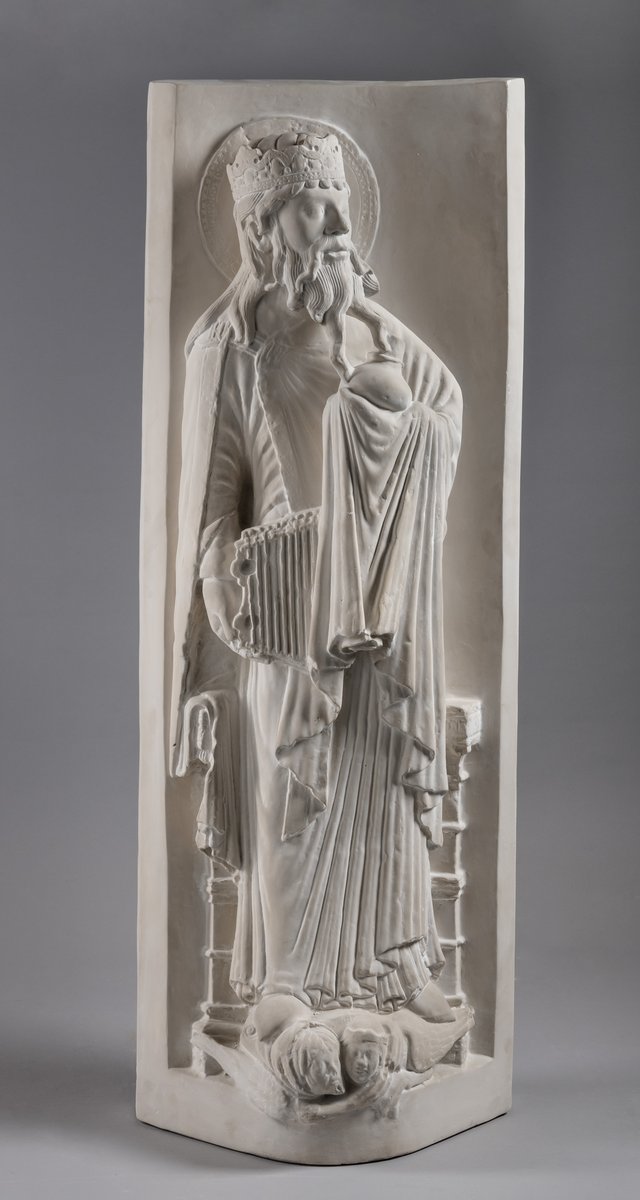
One of the twenty-four Elders
Sculptures
| Artist | |
|---|---|
| Culture | Italian |
| Date | first half of the 17th century |
| Object type | sculpture |
| Medium, technique | bronze with dark patina |
| Dimensions | 57.5 × 25 × 22 cm |
| Inventory number | 5303 |
| Collection | Sculptures |
| On view | Museum of Fine Arts, Ground Floor, Baroque Hall |
Thanks to the mass-producing activities of bronze foundries in Venice in the sixteenth–seventeenth centuries, many copies have survived of the bronze statue of Minerva,wearing a helmet, shield in her left hand, and once, holding perhaps a spear in her right. Some versions, paired up with the figure of Peace, were used to embellish andirons, metal stands set in fireplaces decorated with ornaments and bronze sculptures. The model for the statues is associated with the art of Girolamo Campagna: one of the doors (Porta al Senato) of the Hall of the Four Doors (Sala delle Quattro Porte) in the Doge’s Palace in Venice is decorated with statues of War and Peace (1585–1586) carved by the master from marble. Minerva, who embodiesWar, established a type, which then served as a model for many variants. Her posture, movements, and attire are echoed in the Budapest piece.
Petrovics, Elek – Meller, Simon, Ferenczy István bronzgyűjteményének kiállítása, Országos Magyar Szépművészeti Múzeum, Budapest, 1917, p. 15.
Balogh, Jolán, Katalog der ausländischen Bildwerke des Museums der bildenden Künste in Budapest, IV – XVIII. Jahrhundert: 1. Textband Bd. 1, Akadémiai Kiadó, Budapest, 1975, p. 171-172., no. 226.
This record is subject to revision due to ongoing research.